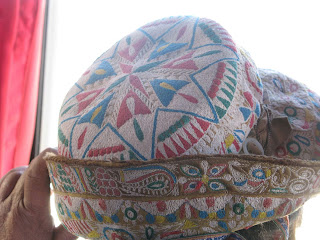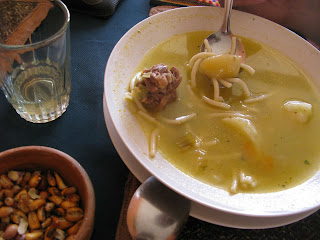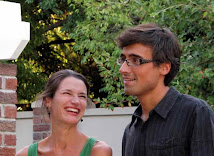
hat festival on the various local buses


chivay barbed wire with flare ............................. local outdoor equipment


weekly supplies from the city ......................................... afternoon chat in chivay main square


caldo blanco (traditional soup)..................................cabanaconde terrace


canyon cactus ............................................. healthy, out of breath hikers in the canyon


oasis paradiso, at the foot of the canyon ...............................posing pet alpaca


the end of the trek at last! ...................................................interesting scene in cabanaconde church


where´s wally? ....................................... bus stop nap


the only condor spotted .................... the ¨vallee del fuego¨garden

pepina-papaya (cucumber-pawpaw) fruit
so the seat situation was not the best as there were many free seats but all with either a bag or a (beautiful) hat preventing us from sitting. now i understand what all the fuss was about (i think that they may be worse than the mexicans getting on the bus or metro)!!
cabanaconde is probably half the size of chivay and has a lovely, quaint feeling. we stayed in the BEST hostal called ¨vallee del fuego¨owned by the famous pablo. the rooms overlook the crop fields and the canyon and have a little garden that absorbs the sunlight during the day. the restaurant is constucted all out of stone and has a wonderfully warm indoor fire. there are candles on the tables and pablo´s brother mixes some good tunes whilst one eats and drinks merrily. as you may sense, i enjoyed this place immensly -
the reason for our visit to this part of the woods was 1) thanks so sarah who spends about three months in this continent every year and 2) to do a hike to the oasis paradiso.
the hike was not a conventional one; it started downhill, for about 1 1/2hrs, and ended uphill, approx 3hrs. thank goodness, there was a refreshing swimming pool waiting for us at the bottom and the thin, cool air at the top. i didn´t realise the impact a change of a few thousand metres would have. at one stage, it was just (just!) the lack of breath that made me stop.
although it was a mighty strenuous hike, it was well worth it. the views were breath taking and the satisfaction of reaching the top of such a mountain made it.
one thing must be said, that churches in the two villages that we visited were beautiful. they were brightly painted with a little less kitchness than usual.

































